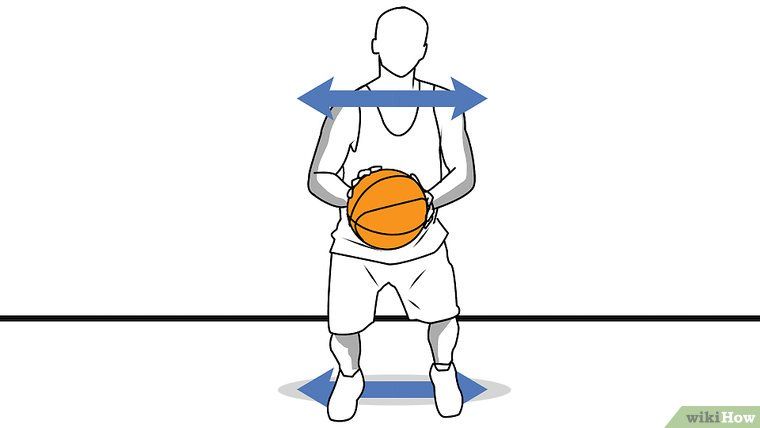Home »
Misc »
How to play basketball with a broken finger
How to play basketball with a broken finger
Broken Finger: Most Common Hoops Injury
November 25, 2014 by momotion
The most common injuries in youth basketball are broken fingers. Small, growing hands often have a hard time with coordination and strength as the ball is being moved around the gym faster each year. Fingers can be jammed or broken by a pass, a dribble or on a fall or during a jump ball or reach for the ball in traffic.
Here is a summary of most broken finger cases and our consistent policy on attendance with regard to this common injury.
Injury: Minor break of finger to break in growth plate (slightly more serious). Fingers that are deformed and require surgery are handled differently. Email the office if the finger/hand needs surgery.
Recovery Time: Usually 2-3 weeks. More conservative doctors may say 4-6 weeks. Several players have returned with taped fingers after 2 weeks even if the doctor said to possibly wait a 3rd week.![]()
Mo’ Motion Policy on Finger Injuries: An absence is an absence, especially in this case. Fingers are not weight bearing. Players have legs. Players need to stay in shape or else there is risk of coming back and hurting another area of the body that has not been kept in shape. Coaches are happy to give injured players credit for attending even if they cannot do all drills (no contact). This keeps the player feeling like a good teammate and sets a great example for his or her peers.
Best Advice on Jammed or Broken Fingers: Ice with a solid ice pack or put hand in ice/water after the injury for 48 hours. The finger will heal much faster if the swelling is eliminated. This will require icing several times a day for the first two days. An effective method for removing the swelling after 48 hours is a hot-cold combo where the hand is placed under or in hot water for five minutes, then in ice or cold water for five minutes (2 times each). Follow all rest instructions or PT exercises prescribed by doctor or therapist.
Follow all rest instructions or PT exercises prescribed by doctor or therapist.
All parents have to do is email the coach and say, “Right pinky finger, doc says 2-3 weeks, please no contact and keep eye on my kid, but note that I am taking full responsibility for a) making sure my child is wearing the proper tape or splint and b) understands that he/she cannot do all drills until doctor says the injury has healed.”
For those who think this is cruel and unfair and totally against everything their medical expert is saying, read on:
Note #1: Players can play with broken fingers without knowing they are broken. Some fingers are just jammed and players play with them. The player or coach may not know it’s broken by its appearance. Just because it’s purple does not guarantee it’s broken and it often takes some time for it to change color. Coaches are told to not let players back into contact drills and to sit them down/out if their finger is deformed or pointing in the wrong direction or clearly broken.:no_upscale()/cdn.vox-cdn.com/uploads/chorus_asset/file/1396862/hands.0.png) Please do not blame the coaches for not knowing that your child’s finger was broken.
Please do not blame the coaches for not knowing that your child’s finger was broken.
Note #2: Players can play with broken fingers that are taped even if the doctor says NO. This is usually not true with a broken foot (weight-bearing), but again, it’s possible and often tough to determine if the area is sprained, jammed or broken during the heat of competition. We do not encourage kids to play with broken bones, but again, there are several examples of kids who finished games or practices with minor broken fingers. Please forgive the coach if he or she did not have an X-ray machine handy to take a photo of your child while coaching.
We do, however, expect that if the child is feeling better (usually after a few days), AND if the injury is protected by a splint and/or tape or brace, the player can participate in all running and shooting (non-injured hand drills) and also walk through all plays. It will be difficult to catch the ball (so their partner adjusts), but the player can still make gains in conditioning, shooting (controlled) and even with ball-handling on the non-injured hand.
Note #3: Players are strongly encouraged to tape the finger for a few weeks after being allowed to return to contact. Sometimes kids forget the tape. Coaches aren’t trainers, but of course, if coaches remember the injury and there is tape in the first aid kit (not always the case), the coach is happy to tape the player’s finger(s). Players must bring their own tape and tape their finger up before they get sweaty. Players are told that it’s best to tape the formerly broken finger to the finger next to it for support.
Injury Prevention – Post-Injury
Jammed and broken fingers will decrease significantly if the player does any and all of the following:
– regular year-round ball-handling drills
– finger-tip push-ups with knees down so the joints are strengthened and not overloaded/locked
– wrist flips and stretching of the fascia in the palm and on top of the hand
Remember – if the finger is badly broken, disfigured and needs surgery, our coaches know not to touch the finger and to contact parents or contact the office to follow-up with parents.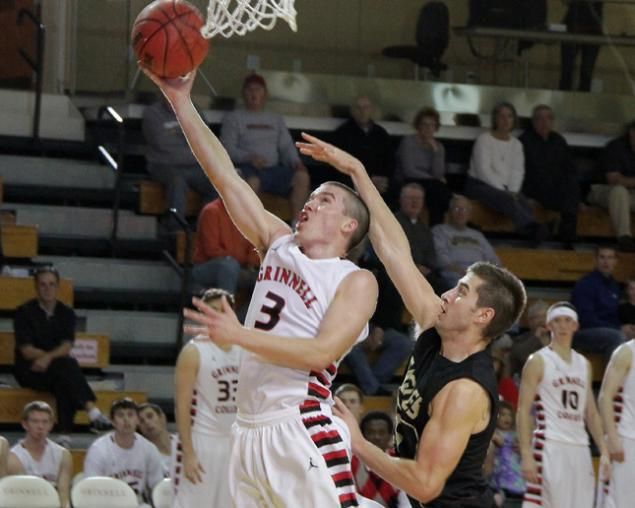
If it’s a minor break and dealt with in a reasonable manner, the child returns to the season without feeling like he or she missed much. The coaches teach the kids how to make the most of less-than-perfect situations. Players can participate in many important drills where they can work around this injury. Parent cooperation is appreciated.
All the latest on blogs, podcasts, videos, training tips, programs and more
Yes, I Want That
OrthoKids - Basketball Injuries
Overview
Basketball is one of the most popular sports in America and many kids have fun playing every year. More than 500,000 people are treated every year for basketball related injuries. Injuries can occur to kids who play on multiple teams throughout the entire year or to kids to only play for fun with their friends. Most of these injuries are preventable with a few simple steps.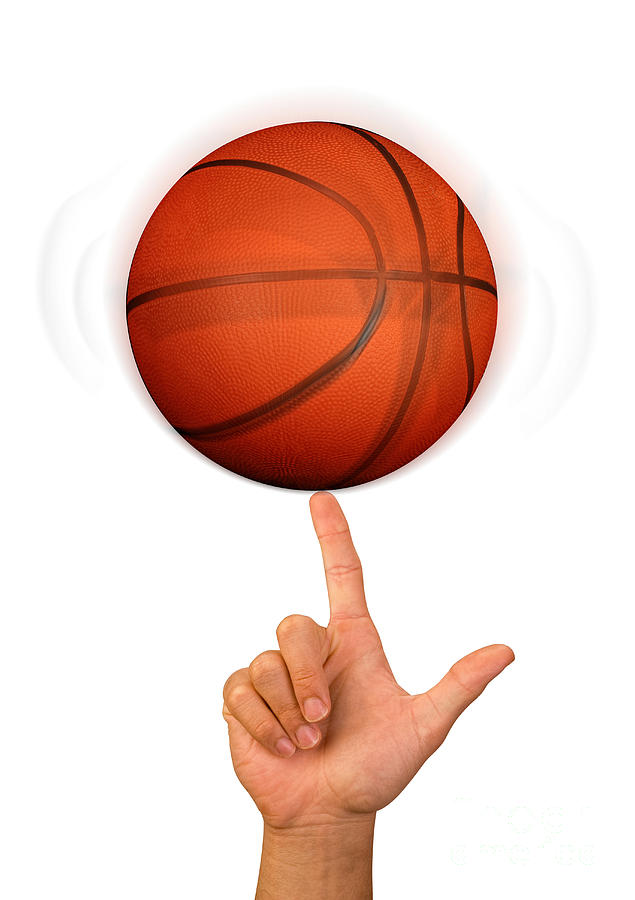
Common Injuries
Basketball is a fast-paced game with a lot of running. This puts kids at risk for injuries to the foot, ankle, and knee including soft tissue injuries or fractures. Basketball players also frequently get finger injuries. Serious injuries can occur from contact with a ball or another player. Overuse injuries such as tendinitis can also occur.
Head: Concussions most commonly occur when a player is hit in the head by a ball or another player or trips and hits their head on the ground. A concussion does not always involve loss of consciousness or blacking out. Possible symptoms of a concussion include headache, confusion, dizziness, nausea, vomiting, or blurry vision. Any player with concussion symptoms should be evaluated by a medical professional and cleared before return to play.
Arm/Hand: The shoulder muscles can get sore from excessive overhead throwing. Fingers can be jammed or broken by contact with a ball or another player. Many finger injuries are minor, but painful. If the swelling is minimal and the finger can fully flex and extend, return to basketball may not take long. However, if there is significant swelling, especially with difficulty bending or straightening the joint, evaluation by a pediatric orthopedic surgeon is recommended. A jammed finger sometimes produces a broken bone (fracture) that needs surgery (Figure 1). Displaced finger fractures will have a better outcome if recognized early.
Fingers can be jammed or broken by contact with a ball or another player. Many finger injuries are minor, but painful. If the swelling is minimal and the finger can fully flex and extend, return to basketball may not take long. However, if there is significant swelling, especially with difficulty bending or straightening the joint, evaluation by a pediatric orthopedic surgeon is recommended. A jammed finger sometimes produces a broken bone (fracture) that needs surgery (Figure 1). Displaced finger fractures will have a better outcome if recognized early.
This player sustained a hyperextension injury of the finger causing an avulsion fracture. The joint ligament is so strong, it is easier to pull off the small bone attachment instead of tearing the ligament. For this finger injury, no surgery or cast is required. Basketball will not be possible for at least 2-3 weeks.
Leg/Ankle: Injuries can include contusions (bruises), ligament injuries, and broken bones (fractures). Overuse knee injuries can occur with repetitive activity. Twisting and pivoting injuries can also cause damage the ligaments inside the knees. Conditioning the muscles around the knee joint can help prevent these. Any knee injury should be evaluated before a player returns to the court. Ankle injuries are very common and may be minor with quick return to play or require urgent evaluation (Figure 2). Young children and growing teenagers may not have an obvious injury on their x-rays but still require a splint or cast to help their healing and safe return to play. When a player cannot bear weight due to severe pain and swelling, early evaluation by a medical provider is recommended.
Overuse knee injuries can occur with repetitive activity. Twisting and pivoting injuries can also cause damage the ligaments inside the knees. Conditioning the muscles around the knee joint can help prevent these. Any knee injury should be evaluated before a player returns to the court. Ankle injuries are very common and may be minor with quick return to play or require urgent evaluation (Figure 2). Young children and growing teenagers may not have an obvious injury on their x-rays but still require a splint or cast to help their healing and safe return to play. When a player cannot bear weight due to severe pain and swelling, early evaluation by a medical provider is recommended.
This player sustained an injury to the knee playing basketball. A deep bone bruise (contusion) is seen on the MRI. This injury is enough force to also tear the anterior cruciate ligament and meniscus.
PreventionBefore You Play
Train for the season before it starts.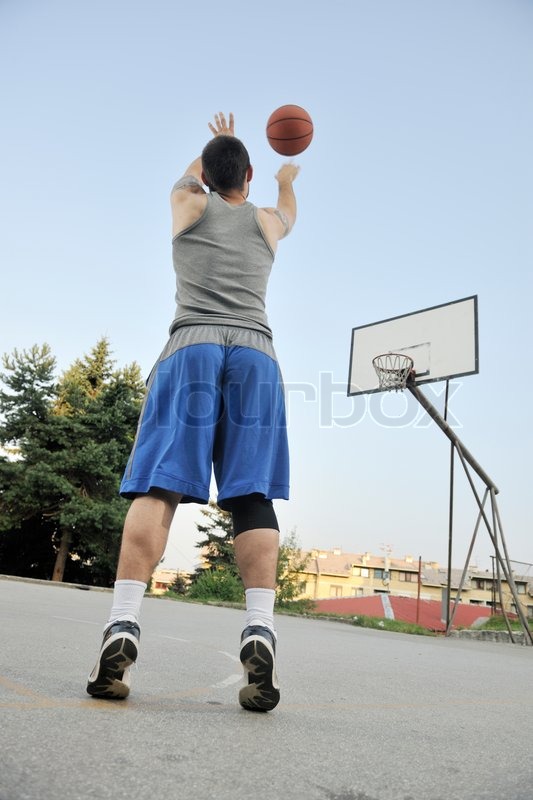 Training should include aerobic exercise, strength training, and flexibility. Always warm-up and stretch before every practice or game. Make sure that you get enough fluids before, during, and after play.
Training should include aerobic exercise, strength training, and flexibility. Always warm-up and stretch before every practice or game. Make sure that you get enough fluids before, during, and after play.
EquipmentShoes: Choose shoes that fit well and offer support. Non-skid shoes are preferred. Ankle supports can reduce the risk of sprains.
Face protection: Mouth guards should be used in competitive leagues to protect the teeth and mouth. Use safety glasses or glass guards to protect eyes.
Other gear: Do not wear jewelry during practice or games. Knee and elbow pads may prevent injuries. Athletic supports should be worn.
Injury Prevention Tips- Have a pre-season physical to identify any conditions, injuries, or deficits that may lead to in-season injuries.
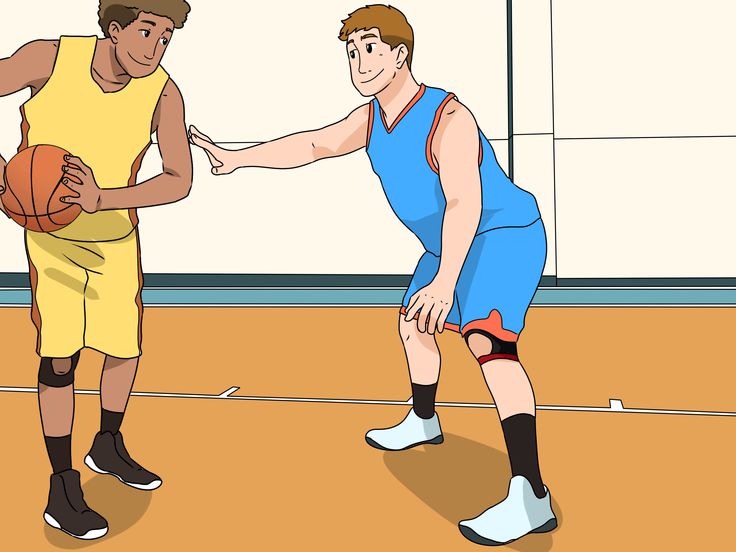
- Prepare for the season by gradually increasing activity, such as running, agility training, and strength training. This is very important if you are coming off a rest period.
- Avoid overtraining and overuse injuries by taking rest periods throughout the year. Do not play on more than one team at a time. Cross-training or playing a different sport for a season is an excellent way to prevent overuse injuries and burnout.
- Be aware of court conditions. Courts should be maintained properly to avoid injuries. Playing in wet conditions can increase injuries.
- Play only your position and know where other players are on the court to reduce the chance of collisions.
- Do not hold, block, push, or trip opponents.
- Prepare for the weather. Hydrate well before playing, especially on very hot days, and take water breaks. Take cover during thunderstorms.
- Wear well-fitting shoes. Take time to stretch before practice or games.
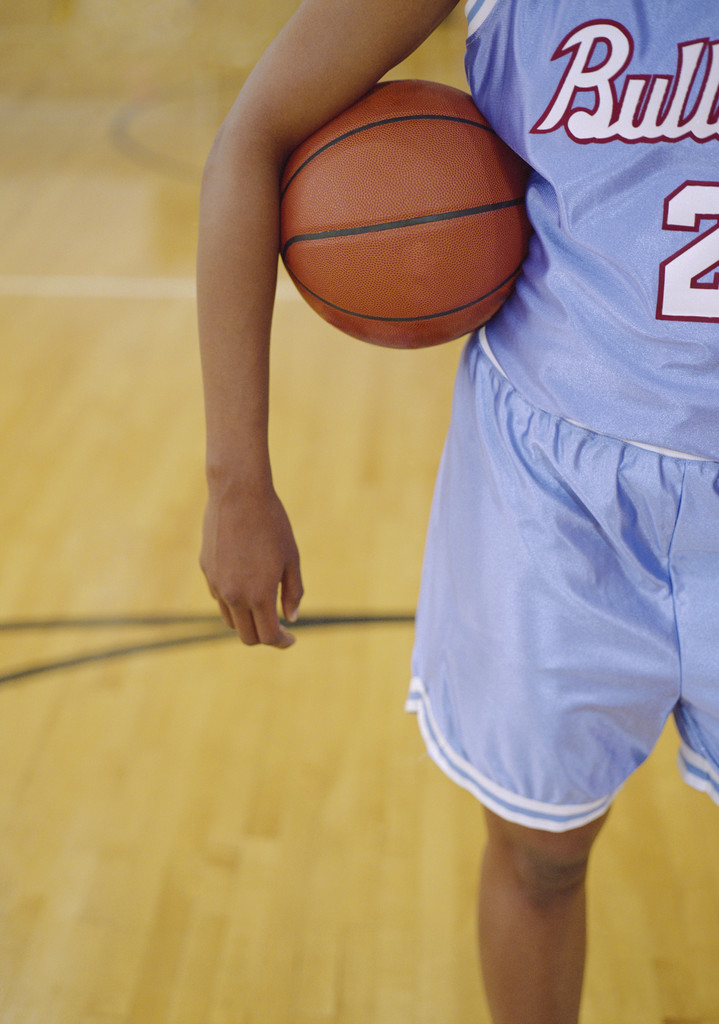 Growing athletes are at risk for injuries because of lack of flexibility.
Growing athletes are at risk for injuries because of lack of flexibility.
- Discuss injury prevention with your health care professional and coach. Important medical conditions can occur even without obvious injury and these may harm the back, knees, and ankles. When a persistent limp occurs or pain causes an athlete to continue missing practices and games, it is better to see your pediatric orthopedic surgeon for evaluation.
Safe Return to Play
An injured player should have no symptoms when returning to play. They should have no pain, no swelling, normal range of motion, and returned to their previous strength. Hip, knee, ankle, and foot injuries should have improved enough to allow hopping on only the injured leg and the pediatric orthopedic surgeon should give the player a release for basketball. Often, basketball players cannot return to competition with a cast on an arm, unlike other sports.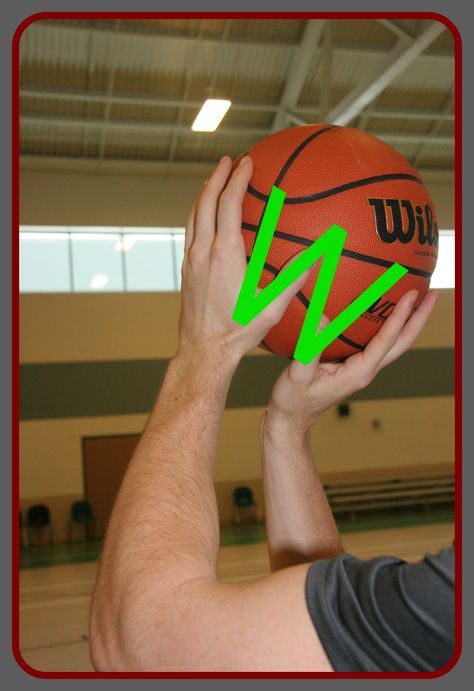 Any player who has a concussion should have no symptoms, either at rest or with exercise, and should be cleared by a physician before returning to play.
Any player who has a concussion should have no symptoms, either at rest or with exercise, and should be cleared by a physician before returning to play.
Other References:- Basketball Injury Prevention - OrthoInfo
- USA Basketball - How to Stop Injuries
- StopSportsInjuries.org
"The best you can think of is 4 points for extra long shots." Broken finger match and 4 point throw - Basketball. 63rd region - Blogs
Visits of BC "Samara" to the studio "Radio Samara Maximum" have already become a good tradition.
Yesterday forward Maksim Chislov and Alla Shcherbakova, the head of the cheerleading team of BC Samara, were on the air yesterday. The reason was the upcoming important matches for our team this week in the Superleague championship - against Irkut and Spartak-Primorye.
For an hour, Maksim and Alla talked to the host, Andrei Mironov, whom fans know as a commentator on TV and Internet broadcasts of our home matches, as well as with the fans themselves, who sent questions via social networks. The questions were very different: from Maxim's sniper secrets to the requirements for those wishing to get into the support group.
The questions were very different: from Maxim's sniper secrets to the requirements for those wishing to get into the support group.
Especially for those who missed yesterday's live broadcast on 104.3 FM, we have prepared a selection of the most interesting questions and answers.
Maxim is sitting and smiling, but the finger on his right hand is in a cast. What happened?
M.Ch. It happened on December 29 - in the last match of 2017. My teammate Alexander Savenkov gave me a pass and hit the ball in my finger. At first I did not attach any importance to this: I celebrated the New Year, returned to Samara, started training ... And after the game with Ryazan, which was on January 8, I decided to take a picture - to see what was wrong with my finger, why it hurts so much . It turned out to be a fracture - a piece of bone came off, plus a torn tendon. They did the surgery right away.
What, in your opinion, was the reason for the small failure of Samara in December, when the team lost several matches?
M.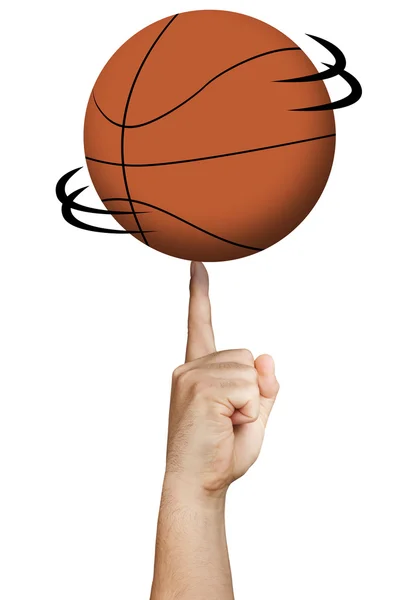 Ch. I think it's because we had a lot of games back then. In December, if I'm not mistaken, we played eight matches. And we're just tired. There were far fewer games last season. Now we play almost every other day - we don't have enough physical or emotional strength.
Ch. I think it's because we had a lot of games back then. In December, if I'm not mistaken, we played eight matches. And we're just tired. There were far fewer games last season. Now we play almost every other day - we don't have enough physical or emotional strength.
"We're finishing the game, one day off, one practice day, and the game is back." Igor Grachev on adapting to Superleague
Alla, many people remember how you yourself performed during breaks on the court. Now you are in charge of a support group. Do you feel comfortable in this role? Do not sometimes want to run out with the girls to the playground?
A.Sh. I've been leading a support group for a long time, it's just that for a while I was a "playing coach" - I was in charge, continuing to perform. Yes, even now I would gladly go to the site ... I want to dance, feel this atmosphere when you share your mood with the audience, supporting the team, and they, the audience, give very good feedback - this, of course, is nice. But it is no less pleasant to look at the girls from the side. Therefore, now I feel wonderful!.. But once there was a moment when one of the girls was late - and I was ready to go to the site.
But it is no less pleasant to look at the girls from the side. Therefore, now I feel wonderful!.. But once there was a moment when one of the girls was late - and I was ready to go to the site.
Surely now many girls have a question: how can I get into the support group of BC Samara?
A.Sh. You can get in either by writing to me or by contacting the club administration. We are always ready to see you. We do not accept everyone - this is true, but at least we are ready to see everyone. Previously, we had a requirement that a girl have a “profile” dance education or do gymnastics - but now we have moved away from this. I realized that you need to look at a specific person - after all, even without education he can be very bright, beautiful and charismatic. You must have a pleasant appearance, the ability to dance professionally, good height and a beautiful figure. "Exams"? Of course, you definitely need to sit on the twine. Then I show some combination of movements - and look at its implementation.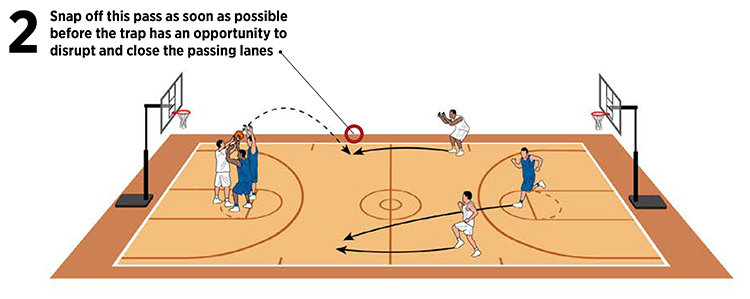 And if a girl is not doing the right thing now, but I see her potential, I will, of course, take her.
And if a girl is not doing the right thing now, but I see her potential, I will, of course, take her.
Maxim, do you watch NBA matches?
M.Ch. I simply stopped watching the NBA - I got bored... Closer to the playoffs, teams start playing for the result, but 82 games in the regular season is a lot. There are many passing matches where the spectators do not fill the stands. Although you can, of course, watch some interesting matches where you can feel the heat and take your breath away. But there are few such matches in the regular season. In addition, NBA games are very early in our time - at 5 or 6 in the morning. We are sleeping at this time, preparing for training, we are not up to basketball.
You have a good three-point shot. Is it a natural talent? Or the result of long training?
M.Ch. It seems to me that from my childhood, when I just started playing basketball, some sniper abilities were manifested - from the age of ten, I could probably score three-pointers.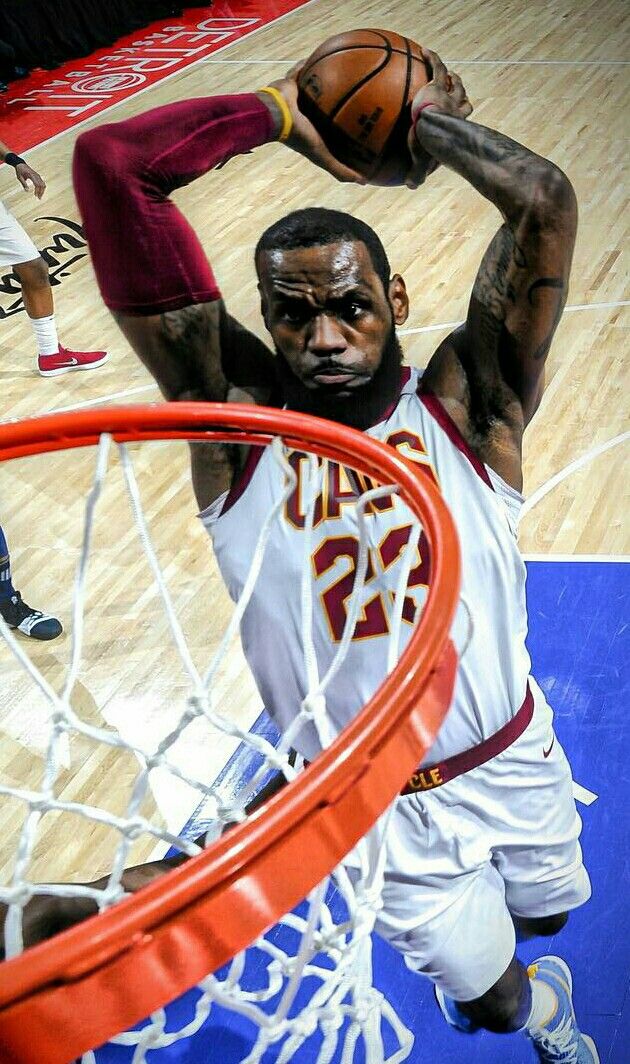 And then I started working on it so that there was progress. Now, of course, it happens that sometimes I get it, sometimes not. But I do not despair - I come to training and work on this element again. Secrets? It's almost like a reflex - a movement worked out to automatism. Of course, I aim, but it happens that the defender actively interferes with you, you throw almost blindly - and still score.
And then I started working on it so that there was progress. Now, of course, it happens that sometimes I get it, sometimes not. But I do not despair - I come to training and work on this element again. Secrets? It's almost like a reflex - a movement worked out to automatism. Of course, I aim, but it happens that the defender actively interferes with you, you throw almost blindly - and still score.
What new rule in basketball would you introduce if you were the head of FIBA? Maybe a four-pointer for accurate shots from his own half of the court?
M.Ch. Just thought about this. It's probably the best thing you can think of right now. 4 points for such throws would be fair. The shot is very difficult, no matter how much you train it - on a regular basis you would not be able to score it. Everything depends on luck.
Your girlfriend is also an athlete, she plays for Dynamo volleyball from Moscow. How do you manage to maintain long distance relationships?
M. Ch. We are always in touch with her - we constantly call each other, communicate via SMS ... Sometimes we manage to cross paths on the road. This season we have many trips to Moscow, and quite long in time, so it turns out to see each other for a couple of days. And I think it's okay. I know many athletes who live and play in different cities - and they are doing well.
Ch. We are always in touch with her - we constantly call each other, communicate via SMS ... Sometimes we manage to cross paths on the road. This season we have many trips to Moscow, and quite long in time, so it turns out to see each other for a couple of days. And I think it's okay. I know many athletes who live and play in different cities - and they are doing well.
Now 3x3 basketball is very popular. Your Khimki partner Alexander Zakharov has achieved great success here, he plays for the Russian national team. Have you tried playing 3x3 basketball yourself?
M.Ch. Of course. I used to play 3x3 all the time in the summer, participated in various tournaments, once I even won a major Basket Love tournament in Samara. But now I think more about my health - after all, there is a lot of struggle in 3x3 basketball, you need to be well physically prepared, and in the summer you want to relax, be with your family, with a girl .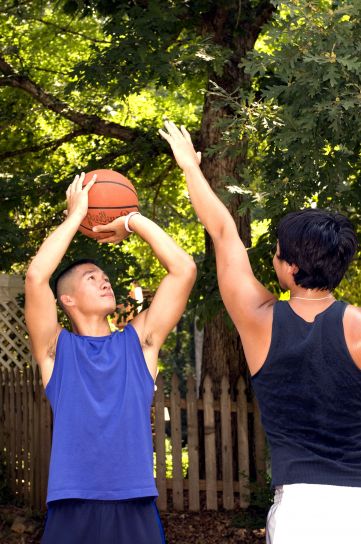 ..
..
What do real basketball players eat? And are there any dietary restrictions in the support group?
M.Ch. Diet and proper nutrition are very important for athletes. But that doesn't apply to me. I eat everything. I can and even need to eat everything - physical activity and the structure of the body do not allow me to gain weight. The only thing I don't eat is fast food. Before the games, we mostly eat spaghetti with chicken - they are quickly digested, there is no heaviness in the stomach when you go out on the court.
A.Sh. Of course, I don't send any warning text messages to girls before matches. And I don’t look at their plate. But judging by how slim they are, they keep themselves in shape. They are great. Although after the New Year holidays, I made a couple of comments. As a dancer in the recent past, I would advise everyone who dances not to overeat: you can eat everything, the main thing is not to overeat.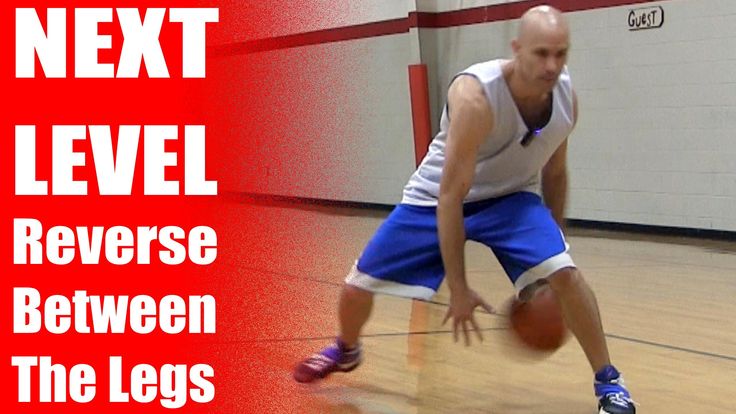 We do not have any obligations in the group to visit fitness clubs or the pool - only recommendations. We are going to training three times a week, including in this way keeping ourselves in shape.
We do not have any obligations in the group to visit fitness clubs or the pool - only recommendations. We are going to training three times a week, including in this way keeping ourselves in shape.
More good basketball! And more good music at 104.3 FM in Samara!
remembering the brightest moments in the life of the famous basketball player
In January 2020, the athlete, along with his 13-year-old daughter, died in a helicopter crash. That plane crash claimed the lives of nine people. Men Today recalls the highlights of one of the best basketball players in the history of the game.
Kirill Ivashkin
Getty Images
In December 2017, the Los Angeles Lakers retired two numbers at once - 8 and 24. Kobe Bryant played under them, and no basketball player has ever been honored with such an honor - even the legendary Michael Jordan. That is why many call Kobe one of the best players in the history of basketball.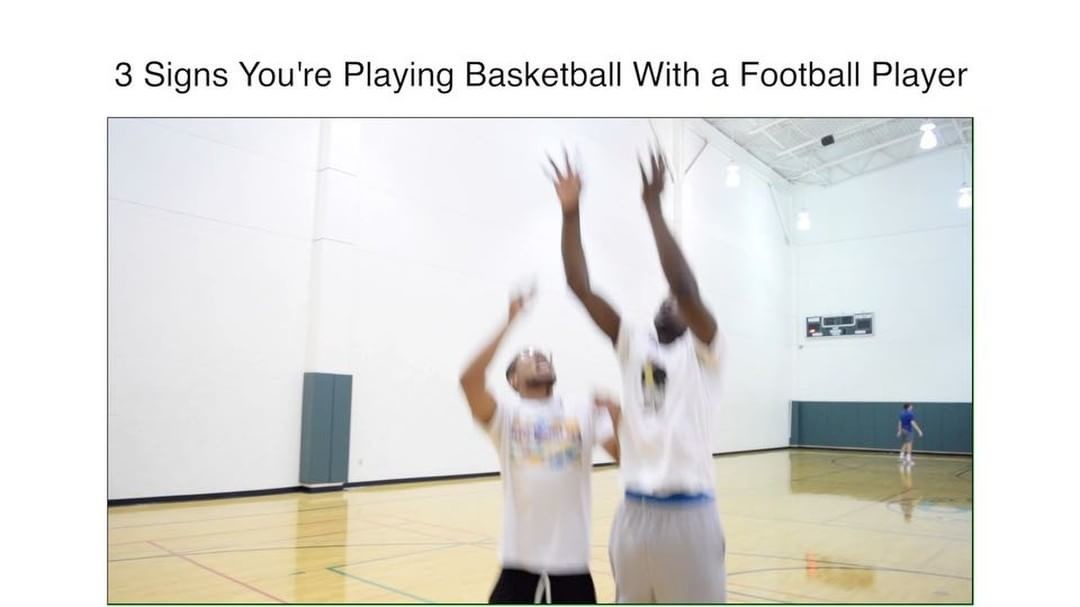 Kobe liked to say that hard work will always trump talent. It is not surprising that many legends have always circulated around the athlete's training, some of which turned out to be true.
Kobe liked to say that hard work will always trump talent. It is not surprising that many legends have always circulated around the athlete's training, some of which turned out to be true.
Hero of the night
In April 2016, Bryant made his last appearance on the floor of the home arena of his home team, for which he played for twenty seasons. In his farewell ode to basketball (yes, we were not mistaken - Bryant composed a poem for a significant date), Kobe confesses his love for the game, but said that he was forced to end his career: his body can no longer withstand the loads. Later, Kobe's poem will be made into an animated film, for which he will receive an Oscar - this is the only time a professional athlete has won the award.
Stories of the athlete's insane hard work circulated throughout his career. Brooklyn player Blake Griffin spoke about Bryant's night training. According to him, in Italy, Kobe called the local basketball star Marco Belinelli and asked him to come to his gym. Nothing unusual, except that this call was at four o'clock in the morning. “I thought we would quit and go home, but it turned out to be a full-fledged hard workout,” Belinelli admitted.
Nothing unusual, except that this call was at four o'clock in the morning. “I thought we would quit and go home, but it turned out to be a full-fledged hard workout,” Belinelli admitted.
An even more impressive story was told by the USA national team fitness coach who worked with Bryant. During the training camp, the basketball player suddenly called him at half past three in the night. He asked the coach to drive up to the gym to work out a little with him. There is nothing to be done - the coach really dropped the phrase at the first meeting with Kobe, they say, call at any time. In the hall, he found Kobe, who was wet, as if a bucket of water had been poured over him. They went to the gym, spent an hour and a half there, Bryant thanked the coach and went off to "throw some more."
Team USA training started at 11am on the same day. The coach came to her broken and sleepy. On the parquet, Kobe was throwing around the ring. The coach came up to him, slapped him and asked when he had finished.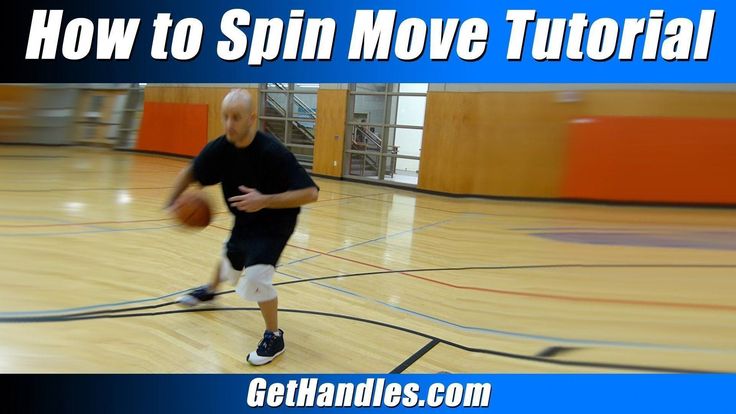 "Finished what?" the player asked. “Well, a nightly workout. When did you leave home?" the coach asked. “Yeah, just finished. I just wanted to shoot 800 shots."
"Finished what?" the player asked. “Well, a nightly workout. When did you leave home?" the coach asked. “Yeah, just finished. I just wanted to shoot 800 shots."
Kobe Bryant in numbers
5-time NBA champion (2000-2002, 2009, 2010)
2x Olympian (2008, 2012)
33,643 career points (4th all-time)
Season MVP (Most Valuable Player) 2007/08
Series Final MVP (2009, 2010)
18 NBA All-Star Game
4-time NBA All-Star Game MVP (2002, 2007, 2009, 2011)
Injury King
surpassing him in age and weight. Little Kobe was crying, but he went out onto the tatami. Before the fight, as Bryant himself admitted, he was literally pounding with fear: “I was scared to death. In the end, of course, I got my ass kicked, but I remember how I reasoned after the fight: "It was not as scary as I imagined." Then I realized that if you allow yourself to fantasize, you can come up with all sorts of horrors.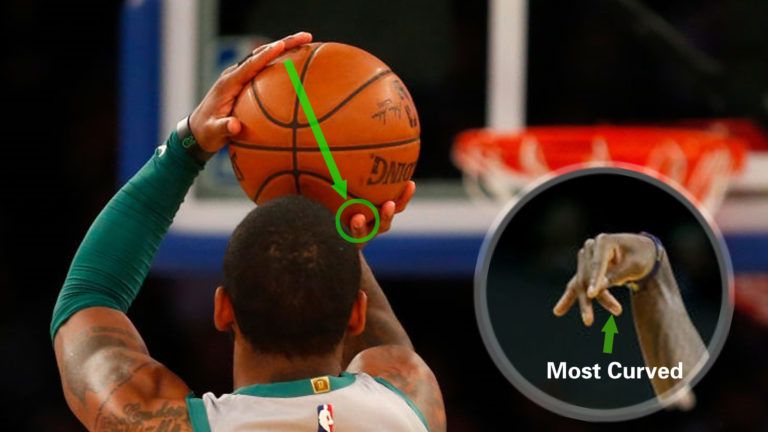 To overcome oneself - this quality helped Bryant throughout his career, especially after severe injuries.
To overcome oneself - this quality helped Bryant throughout his career, especially after severe injuries.
In the 2009/10 season, Bryant suffered a broken index finger. Instead of going to heal the injury, Kobe continued to play, but changed his throwing technique - he began to work less with his index, focusing on the middle and nameless ones. In the next match after the break, he scored 42 points, which was Bryant's most productive game at that time in the season. It ended triumphantly - with a victory in the championship.
Walking onto the floor with a broken finger is not the greatest feat in Kobe's life. In 2013, at 34, the player suffered an Achilles tear. In many cases, such an injury in adulthood means the end of a career. “Now I have to overcome all this and return as the same player, or even better, at 35 years old? How will I do it? Am I strong enough? Maybe it's better to sit in a rocking chair and indulge in memories of a glorious career? Bryant wrote on the social network the night after the injury. They recover after such damage on average in nine months. Bryant returned to the floor after seven.
They recover after such damage on average in nine months. Bryant returned to the floor after seven.
Kobe's former Lakers teammate Brian Shaw recalled, "Kobe has the highest pain threshold of any player that I know of. When he tore his Achilles, he refused to leave the court until he threw free throws. He made it to the locker room on his own, not allowing himself to be helped.”
Last match
On April 13, 2016, Kobe played his last game in the NBA. In his own words, he had no desire to go out on the parquet at all. The wife helped: she went with the player's jersey to the legendary basketball players in the history of the NBA - former and current - who left wishes for him and signed on the jersey. After that, he could not not go to the match.
At his peak in 2006, Bryant scored 81 points in one game. This is the second result in the history of the game. “I never set boundaries. I always knew: you can score 80.